National Museum
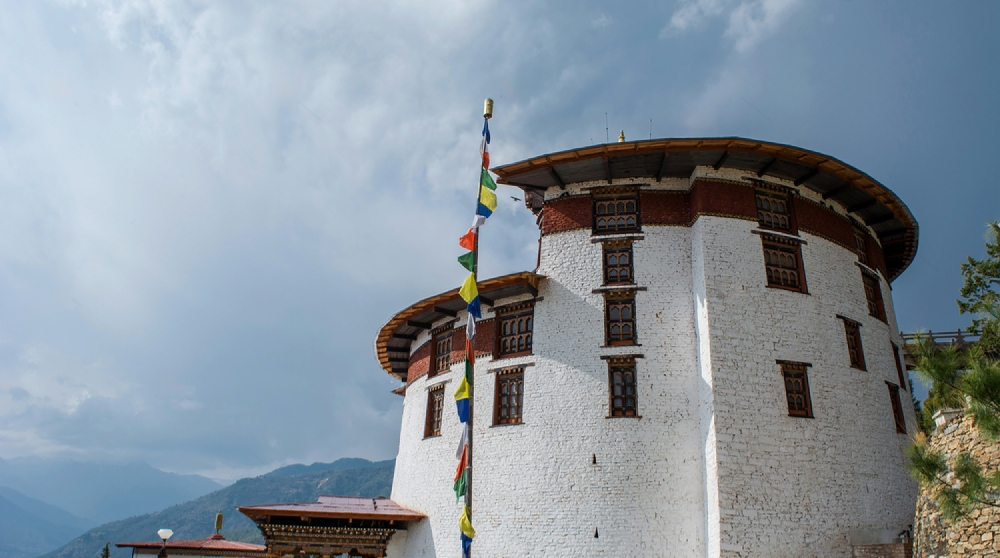
The National Museum of Bhutan in Paro is a must-visit. It reflects Bhutan's history, culture, and art. Located in the ancient watchtower of Ta Dzong, the museum offers a fascinating glimpse into Bhutanese heritage. Built-in the 17th century, Ta Dzong originally protected the Paro Rinpung Dzong from invasions.
Inside, the museum features galleries showcasing ancient weapons, beautiful thangkas (traditional Buddhist paintings), religious relics, and intricate textiles. The architecture of the museum itself is a highlight, with its circular shape and thick stone walls designed for defence.
Additionally, the museum's natural history gallery displays Bhutan’s diverse wildlife and mythical culture.
Rinpung Dzong
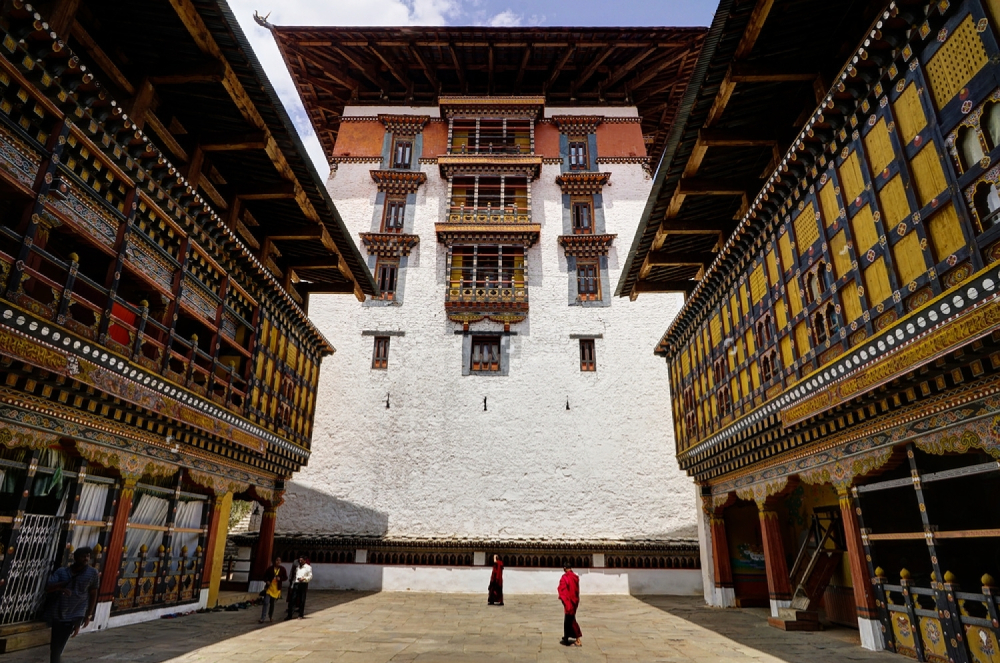
Rinpung Dzong, also known as Paro Dzong, is one of Bhutan's most iconic and historically significant structures. It serves both as a fortress and a monastery.
The name "Rinpung Dzong" translates to "Fortress on a Heap of Jewels”. Built-in 1646 AD by Zhabdrung Ngawang Namgyal, the dzong played a crucial role in defending the Paro Valley from Tibetan invasions.
The dzong stands majestically on a hill overlooking the Paro Chhu (river) and is accessible via a traditional wooden bridge known as Nyamai Zam. Visitors entering the dzong are greeted by its massive stone walls, intricate woodwork, and beautiful courtyards.
The Dzong houses the district Monastic Body and government administrative offices.
One of the highlights of Rinpung Dzong is its annual Paro Tshechu festival, held in the spring.
Although the Dzong courtyard is open every day, the offices are empty on weekends. Foreign guests should remove their headgear and wear long sleeves and pants upon entering.
Citizens of South Asian Association for Regional Cooperation (SAARC) countries must pay an entry fee, but foreign tourists do not because they pay a daily minimum tariff that includes most entry taxes.
Taktshang Goemba (Tiger’s Nest Monatsery)
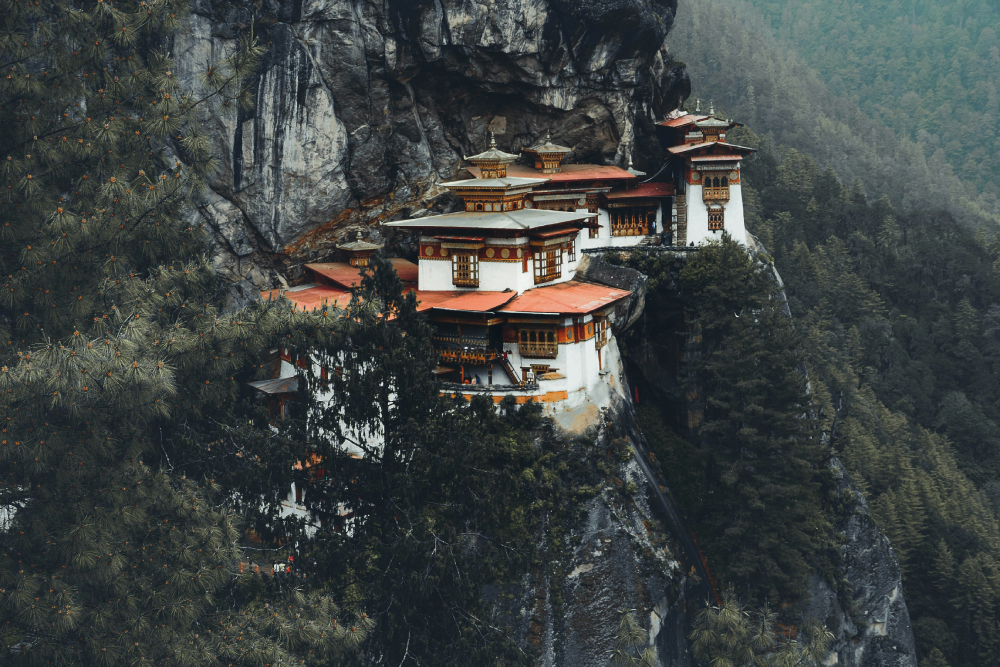
Taktshang Goemba, commonly known as Tiger’s Nest Monastery, is one of Bhutan’s most famous and sacred sites. It is located on a cliff about 3,000 feet above the Paro Valley.
According to legend, Guru Rinpoche, also known as Padmasambhava, flew to this spot on the back of a tigress and meditated in a cave here in the 8th century. This brought Buddhism to Bhutan. The monastery was built around this cave in 1692, and it has since become a major pilgrimage site.
The journey to Tiger’s Nest is a highlight for many visitors to Bhutan. The hike to the monastery takes about 2 to 3 hours and is challenging but rewarding. Along the way, trekkers pass through beautiful pine forests, and colourful prayer flags fluttering in the wind.
There are several viewpoints along the trail where hikers can rest and take in stunning views of the monastery clinging to the cliffside.
Upon reaching the monastery, visitors are greeted by its striking architecture. The buildings are constructed in the traditional Bhutanese style, with whitewashed walls, wooden roofs, and intricate carvings.
Inside, there are several temples and shrines, each dedicated to different deities and Buddhist masters. The main shrine houses a statue of Guru Rinpoche, and the cave where he meditated is also part of the complex. The interiors are adorned with beautiful murals and religious artefacts.
Tiger’s Nest Monastery is not just a tourist attraction but a functioning monastery where monks live and practice their faith. The serenity and spiritual energy of the place are palpable. Photography is allowed in certain areas, but it is essential to be respectful of the religious significance of the site.
Bhutan Postal Museum
The Bhutan Postal Museum in Thimphu is a fascinating place that tells the story of Bhutan's postal history and its cultural heritage. Opened in 2015, the museum is located in the General Post Office building.
It showcases the evolution of Bhutan's postal system from ancient times to the modern day. The museum is divided into five galleries.
The first gallery, "Ancient History," displays how messages were delivered in olden times, including the use of messengers and ancient scripts. The second gallery, "Postal System Development," shows the growth of the postal service in Bhutan, including the introduction of postage stamps. Here, you can see some of the first stamps issued in Bhutan, which were made of unusual materials like silk and steel.
The third gallery, "Philatelic Gallery," is a favourite among visitors. It features a vast collection of Bhutanese stamps. This also includes the famous 3D stamps and talking stamps, which play Bhutan's national anthem.
These unique stamps have made Bhutan famous among stamp collectors worldwide. The fourth gallery, "Communication and Technology," displays modern advancements in Bhutan’s postal service. It also includes the use of technology in communication and mail delivery.
The fifth gallery, "Personal Connections," is very special because it focuses on the personal stories of people who have worked in the postal service. It highlights their contributions and experiences, making history more relatable and human. This gallery also showcases letters and postcards sent by Bhutanese people over the years.
One of the fun features of the museum is the interactive exhibits. Visitors can design their own stamps, which can be printed and used for mailing postcards. This activity is especially popular with students and young visitors.
The museum also has displays of old postal equipment, uniforms, and transportation methods used for delivering mail in Bhutan's mountainous terrain.
Tashichho Dzong
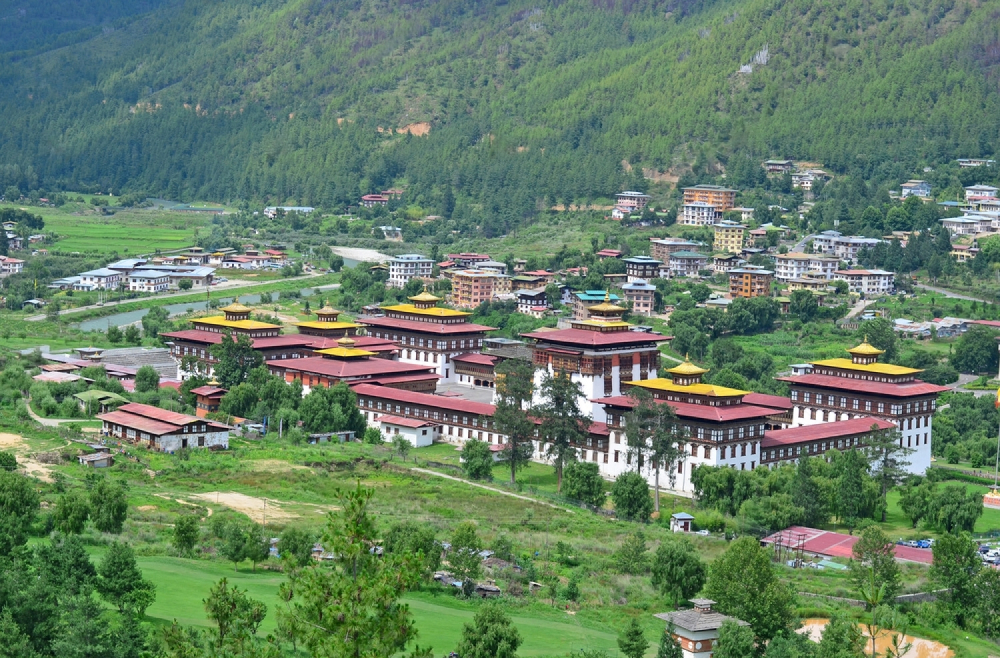
Tashichho Dzong, also known as the "Fortress of the Glorious Religion," is a large and impressive monastery and fortress located in Thimphu, Bhutan's capital. Built-in 1641 by Zhabdrung Ngawang Namgyal, the dzong has been the seat of Bhutan's government since the country's founding.
It is situated along the banks of the Wang Chhu (river) and is surrounded by beautiful gardens. The dzong is a key part of Bhutan's history and culture and serves both religious and administrative purposes.
The main building is a striking example of traditional Bhutanese architecture, with its whitewashed walls, golden roofs, and intricate woodwork. The Dzong houses the throne room and offices of the King of Bhutan, as well as the central monastic body and its chief abbot. During the summer, the monks of the central monastic body move from Punakha Dzong to Tashichho Dzong.
One of the highlights of Tashichho Dzong is the annual Thimphu Tshechu festival, held every fall. This vibrant festival features traditional mask dances, music, and cultural performances, attracting thousands of visitors from across the country and around the world.
Inside Tashichho Dzong, there are numerous chapels and shrines dedicated to various Buddhist deities. These include the main temple, where important religious ceremonies are held, and smaller shrines where monks and visitors can pray and meditate. The interior walls are adorned with beautiful murals depicting scenes from Buddhist mythology and Bhutanese history.
The dzong's location by the river and its surrounding gardens make it a serene and peaceful place to visit. The well-maintained gardens feature a variety of flowers and plants. Visitors can also see the impressive prayer wheel near the entrance, which is turned by the flowing water of the Wang Chhu.
Punakha Dzong
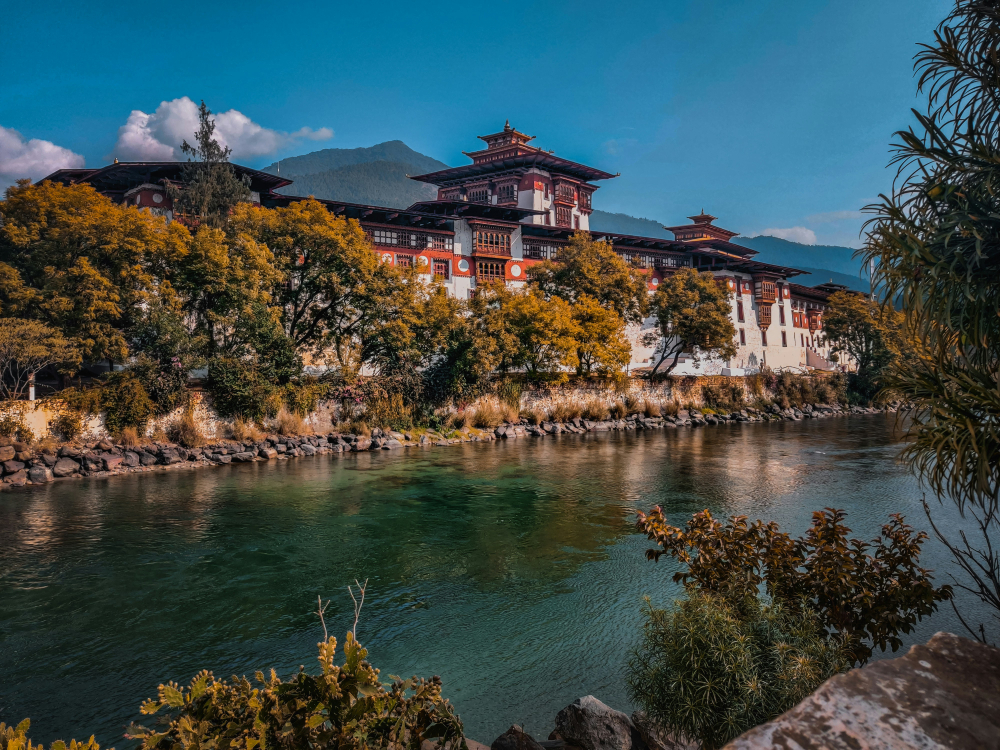
Punakha Dzong, also known as the "Palace of Great Happiness," is one of the most beautiful and important buildings in Bhutan. It is located at the confluence of the Pho Chhu and Mo Chhu rivers in the town of Punakha.
Built-in 1637 by Zhabdrung Ngawang Namgyal, who unified Bhutan, the dzong has played a crucial role in Bhutanese history. It served as the capital and government seat of Bhutan until the mid-1950s and is still the winter residence of the central monastic body.
The architecture of Punakha Dzong is stunning. It has massive white walls and a series of tiered red roofs. This creates a striking contrast against the surrounding green hills and blue sky. Inside, there are many important religious and historical artefacts, including statues, paintings, and the remains of Zhabdrung Ngawang Namgyal. The main assembly hall, known as the Kuenrey, is richly decorated with murals and carvings.
One of the most beautiful features of Punakha Dzong is the covered wooden bridge that connects it to the mainland. This bridge, adorned with colourful prayer flags, offers a picturesque view of the dzong and the rivers. The dzong is also surrounded by lush gardens and trees, including jacaranda trees that bloom with purple flowers in spring.
Punakha Dzong is not just a historical site but also an active religious centre. It hosts the annual Punakha Tshechu, a religious festival with traditional mask dances, music, and rituals.
Gangtey Goemba
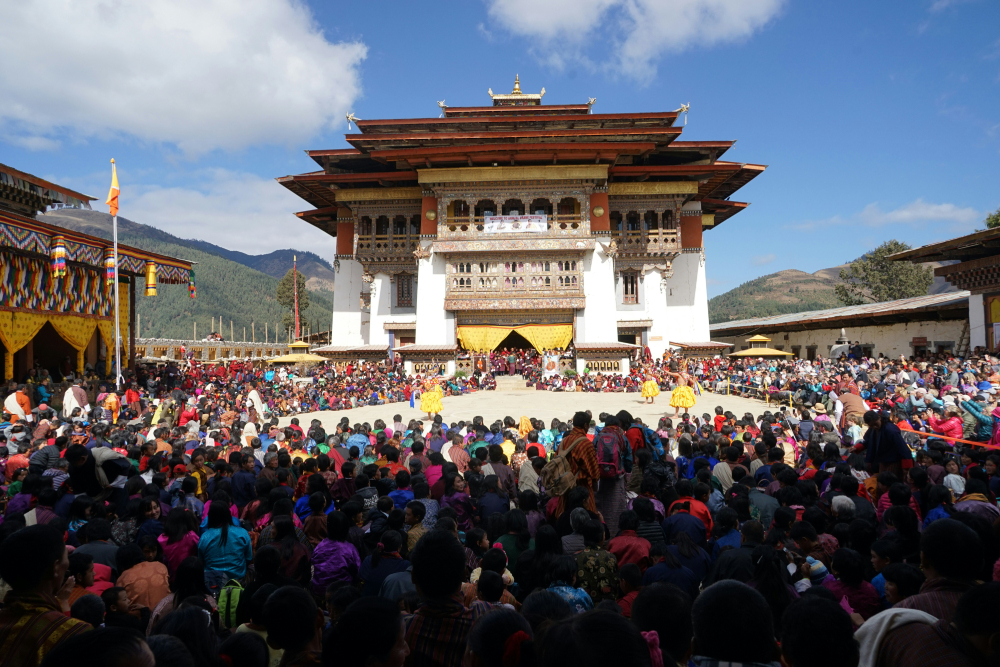
Gangtey Goemba, also known as Gangtey Monastery, is a significant Buddhist monastery located in the beautiful Gangtey Valley in Bhutan. It was founded in the 17th century by Gyalse Pema Thinley, the grandson of the great Bhutanese saint Pema Lingpa. It stands on a ridge overlooking the Phobjikha Valley, offering stunning views of the surrounding landscapes.
The monastery is an important religious site for the Nyingma school of Buddhism. It consists of a central building with a main temple, prayer halls, and living quarters for the monks.
The architecture of Gangtey Goemba is traditional Bhutanese, featuring intricate wood carvings and vibrant paintings that depict various Buddhist deities and stories.
Gangtey Goemba is also known for its annual festival, the Gangtey Tshechu, which is held in autumn.
The monastery is a peaceful and spiritual place, where visitors can learn about Buddhism and enjoy the serene atmosphere. It is surrounded by beautiful forests and farmland, making it an ideal spot for nature walks and bird watching. Gangtey Valley is home to the black-necked cranes that migrate here in the winter.
